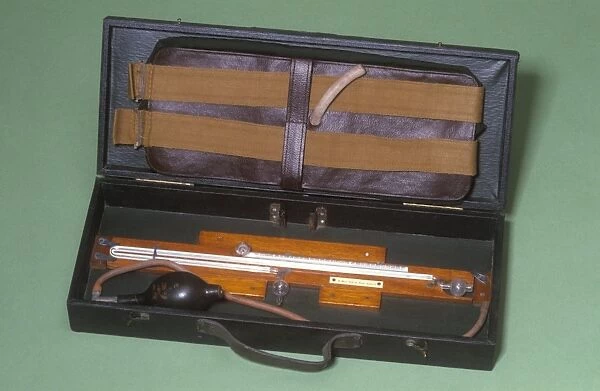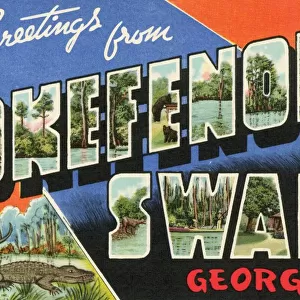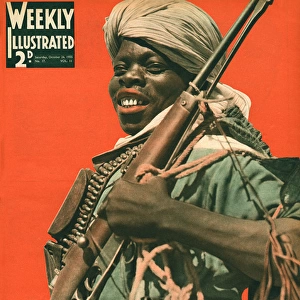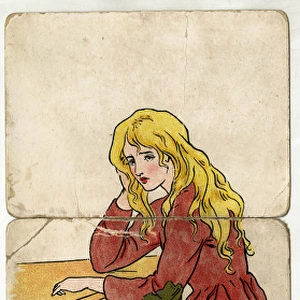Sphygmomanometer, circa 1920 C017 / 6945
![]()

Wall Art and Photo Gifts from Science Photo Library
Sphygmomanometer, circa 1920 C017 / 6945
Martins Improved Sphygmomanometer in its case, dating from 1920. This instrument is made in glass and mercury by S. Maw, Son and Sons. The sphygmomanometer was originally invented by Samuel Siegfried Karl Ritter von Basch in 1881. It was used to measure blood pressure; the cuff (brown) would be placed around the patients arm whilst the physician placed their finger on the wrist to feel for the radial pulse. The cuff was inflated using the rubber bulb (black) until the pulse could no longer be felt. The level of the mercury in the glass tube (which would be placed vertically) would indicate the pressure in the cuff. The pressure would be released from the cuff slowly and the point at which the radial pulse returned would be read from the level of the
Science Photo Library features Science and Medical images including photos and illustrations
Media ID 9339987
© SCIENCE PHOTO LIBRARY
1900s 1920 1920s Antique Apparatus Blood Pressure Cardiovascular Cuff Device Devices Glass Green Background Instrument Instruments Measurement Measures Measuring Mercury Pressure Pulse Rubber Sphygmomanometer Sphygmometer Sphygmometry Twentieth Century Martins
EDITORS COMMENTS
This print showcases a remarkable piece of medical history - the Sphygmomanometer, circa 1920. Manufactured by S. Maw, Son and Sons, this glass and mercury instrument revolutionized blood pressure measurement. Invented by Samuel Siegfried Karl Ritter von Basch in 1881, the sphygmomanometer played a crucial role in cardiovascular health assessment. The accompanying brown cuff would be securely placed around the patient's arm while the physician delicately felt for their radial pulse on the wrist. To determine blood pressure accurately, the rubber bulb (black) was used to inflate the cuff until no pulse could be detected. The vertical glass tube containing mercury then indicated the pressure within the cuff. With utmost precision and care, physicians slowly released pressure from the cuff until they observed a return of radial pulse. This critical moment was measured by reading its corresponding level on the glass tube. As an antique measuring apparatus with historical significance, this Martin's Improved Sphygmomanometer represents an era when medical diagnostics were evolving rapidly. Its presence serves as a testament to both scientific progress and human ingenuity in understanding cardiovascular health during early 20th-century Britain. Displayed against a striking green background, this print captures not only an iconic device but also invites viewers to appreciate how far we have come in our ability to measure blood pressure accurately over time.
MADE IN THE USA
Safe Shipping with 30 Day Money Back Guarantee
FREE PERSONALISATION*
We are proud to offer a range of customisation features including Personalised Captions, Color Filters and Picture Zoom Tools
SECURE PAYMENTS
We happily accept a wide range of payment options so you can pay for the things you need in the way that is most convenient for you
* Options may vary by product and licensing agreement. Zoomed Pictures can be adjusted in the Cart.













